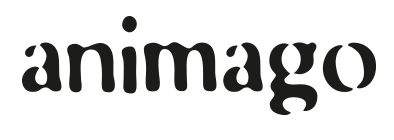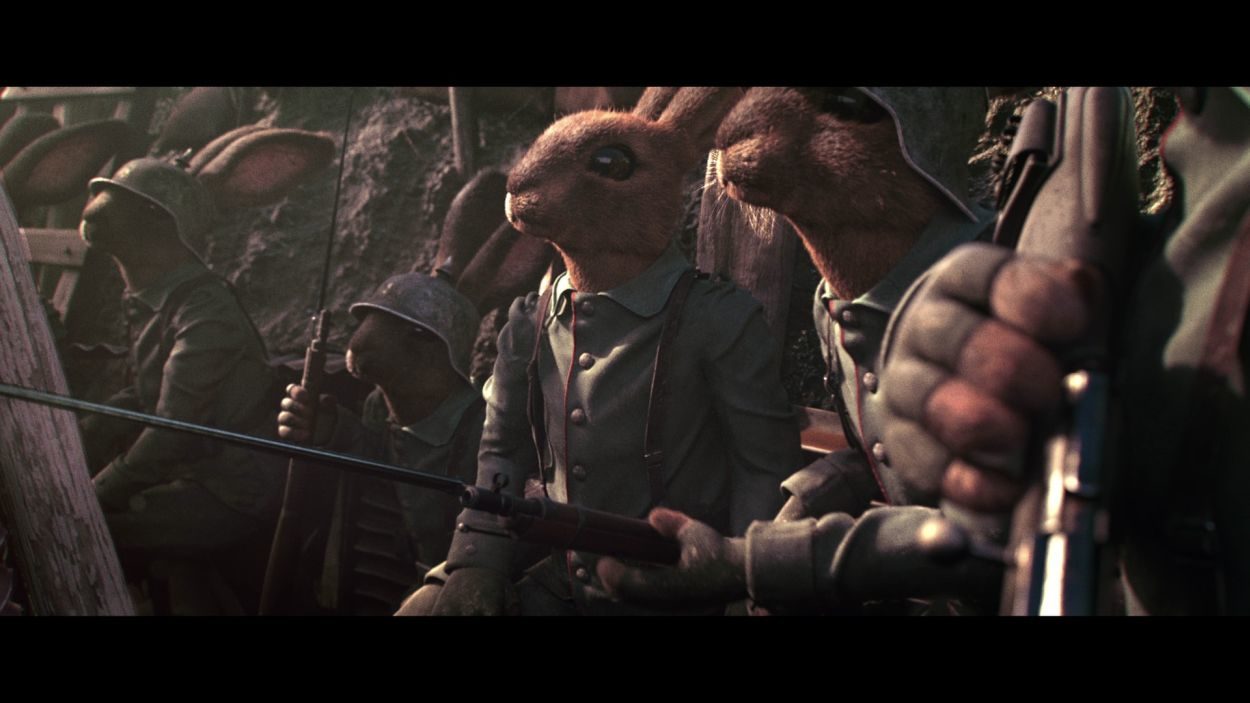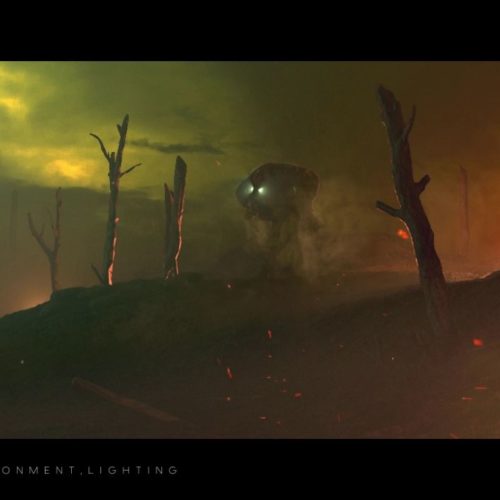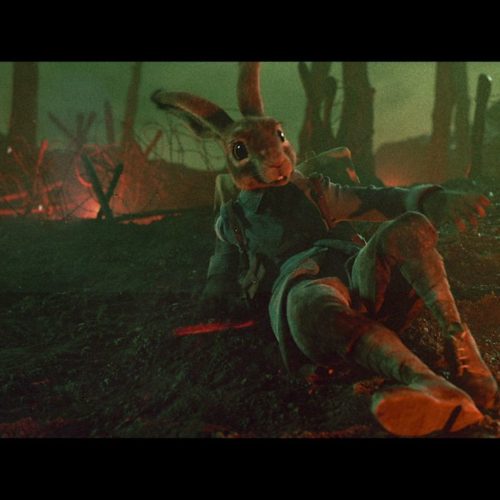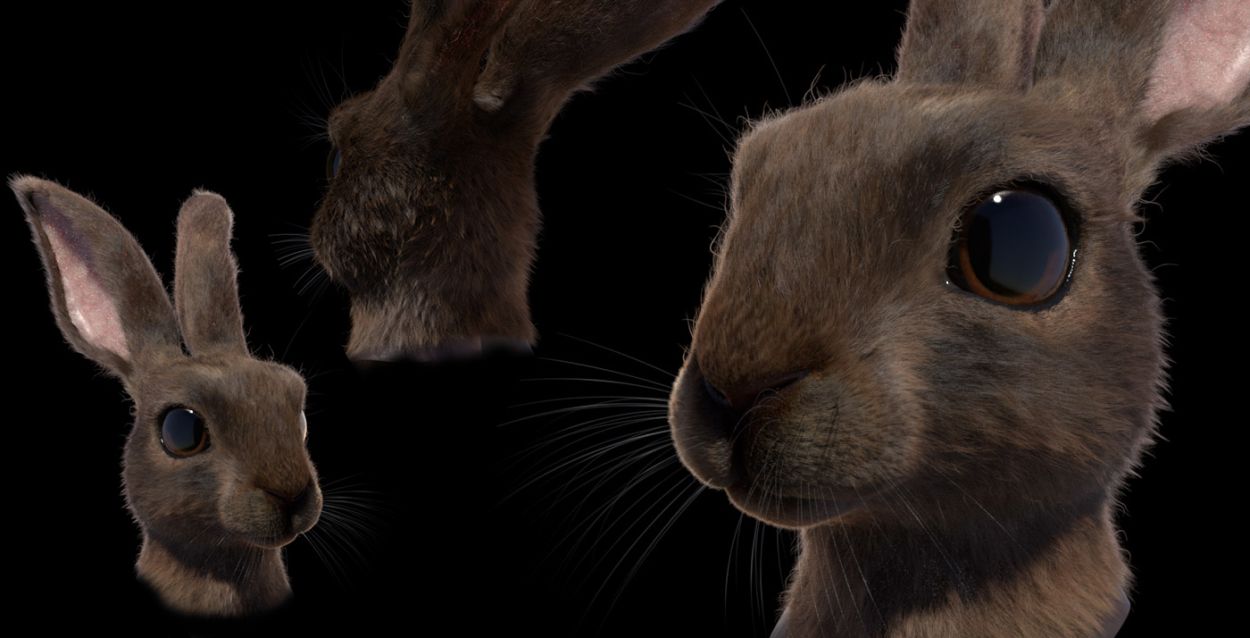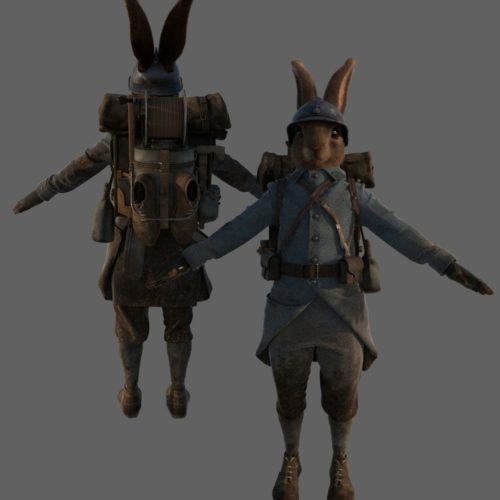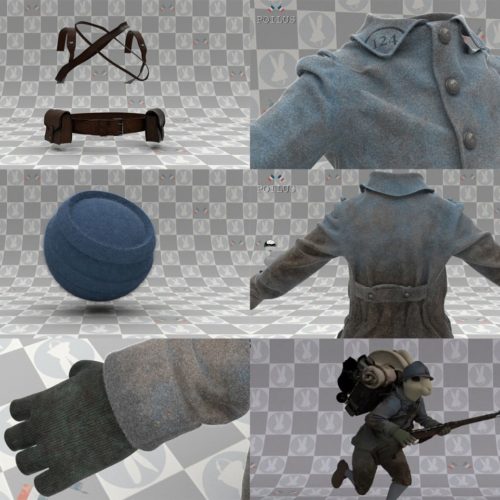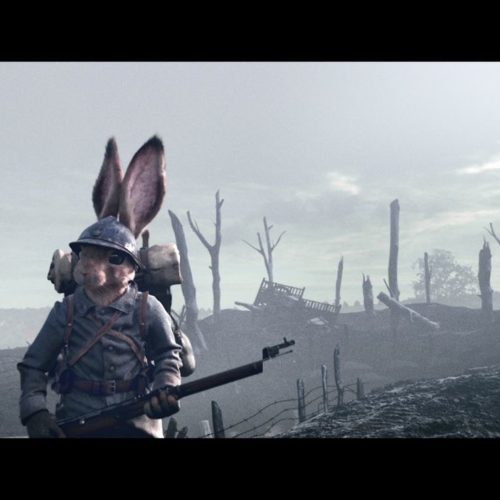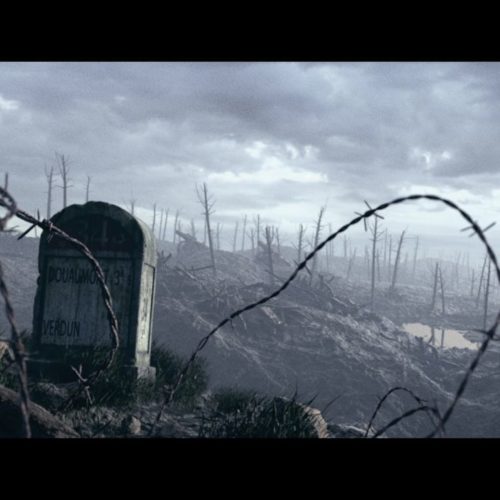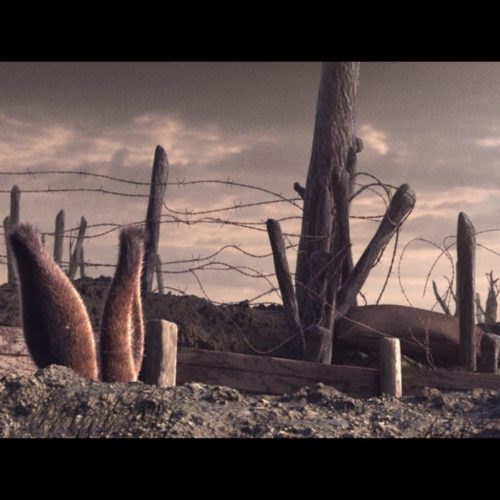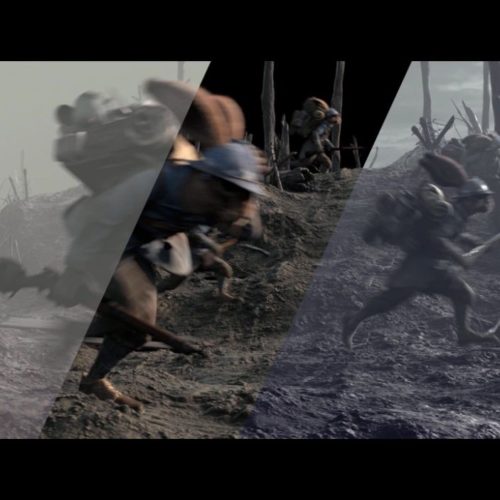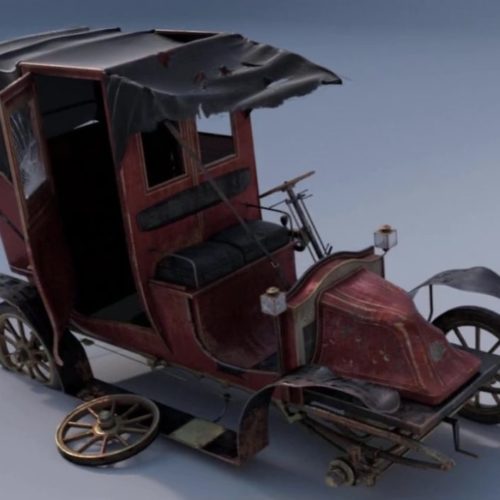Best Character 2017: “Poilus”
Last year’s animago in the “Best Character” category went to a student team from the Isart Digital for their graduating film “Poilus”, in which hare characters experience the horrors of battle in a realistic war setting.
Poilu – literally hairy one – is a colloquial term used to describe French soldiers on the front during WWI. In “Poilus”, a troupe of soldiers is waiting for the battle to begin. Ferdinand, a young hare, passes the time by playing the harmonica. When his commander whistles to attack, Ferdinand gets up, runs, trips and falls. Suddenly, he finds himself in a no-man’s-land where he encounters a terrible creature.
The film’s setting was designed to recall scenes in “Joyeux Noël”, a movie in which German and French soldiers halt their fire on Christmas Eve during WWI. The battle scenes were inspired by Stanley Kubrick’s “Path of Glory” and “Full Metal Jacket”. The six-person team worked for roughly one-and-a-half years on the project with help from six further students for the final sound and music design.
A metaphor for fear
The student team chose hares as their protagonists because the cute little rascals provide the perfect metaphor for soldiers on WWI battlefields, that is, inexperienced, full of fear and indistinguishable from one another in their uniforms. Instead of carrying weapons, many preferred to run away from hunters, just like Ferdinand in the no-man’s-land. The students explain their ambitious goal in the following way: “In the first step, it was absolutely necessary to catapult the audience into a stressful situation. This is why we had to generate a credible portrayal of the First World War, including realistic looks and an exaggerated lighting atmosphere”.
Creating Ferdi
Ferdi was modelled using Maya. The most important elements in the process involved optimising the mesh density and taking into account future animation needs. Thanks to Maya reference tools, the students were able to work on the uniforms, accessories, fur and texturing while the setup was running and the modelling was being updated. For the texturing and look development, they used Mari, 3D Coat or Substance Painter, depending on which tool the particular team member was good at using.
At first the students wanted to use Xgen technology for the fur. But that caused a number of complications, primarily in the interplay with the Guerilla renderer. Although Guerilla indeed allows for the creation of fur via a procedure that solves compatibility problems, the result did not fulfil the students’ expectations. The Yeti plug-in, on the other hand, did. For the fur, the team duplicated Ferdi’s face mesh to create a kind of scalp that transported the guide curves and plug-in information to Maya. After that, the scalp was placed onto the face with the help of warping and skinning so that it followed the facial movements and expressions.
Seeing as the students had to deal with lengthy computation times and a large cache memory, they decided to combine both methods: “For close-ups and shots with lots of detail, we activated the Yeti-generated fur; in other shots we used the procedural fur generated in Guerilla instead”.
Hares in uniform
Simulation was necessary to get the movement of uniforms over fur to look as realistic as possible. After tests using Maya nCloth solvers and deformers, it was ultimately Marvelous Designer that won out, as it enabled the creation of clothing from 2D patterns. Here the students faced the same computation problems as with the fur, and they solved them in the same way; Marvelous was used for the clothing only in critical shots. For shots featuring several hares against a backdrop, the students used a static pose of the simulation as the basic uniform model, which was then skinned onto the body mesh. This allowed them to switch between the simulated clothing, which had many details, and the skinned version.
Ferdi, the main model, was duplicated to create the other hare characters in the army. The obvious advantage of this approach was the labour-saving aspect; however, it also caused a confusing resemblance between the soldiers. In order to create some variety in the clone troupe, the students slightly changed the colour of the fur texture. A second uniform was created for the German soldiers.
War landscape
The entire film takes place in one and the same landscape. The team created the ground using World Machine software; the texture maps were made using several detailed photo and scan resources. With the help of Mudbox and ZBrush, the artists formed the surface of the landscape; after that, the ground was divided up into different sections corresponding to each scene. Each area was equipped with props that the team modelled by hand. As the students explain, “depending on the needs of the storyboard, we put in orientation points with basic geometrical forms before importing the final objects. With the help of instancing, we filled the background with similar objects”.
Guerilla challenges
In addition to the problems associated with fur and clothing, the realisation of a humanoid army of hares with photorealistic characteristics presented a large material challenge. The modest render farm, which the students borrowed from their school, assisted the team in tackling the over 12,500 rendering hours. One problem was finding an efficient workflow with the Guerilla renderer; indeed, the software was new to the team, and when they started the project, they had hardly any documentation material. As a result, they encountered difficulties in almost all rendering stages; however, this turned out to be very instructive. Guerilla allows artists to work with reference objects so that each element can be created simultaneously and assembled in the final project for the lighting and rendering. In the course of the project, the team developed ready-to-use templates with clean scenes: “This workflow proved very successful”, the students recall.
(Mirja Fürst)
“Poilus” Breakdown
